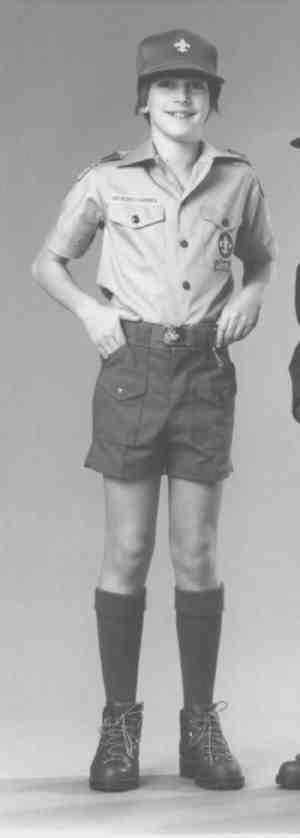
Figure 1.--United States Scouts in 1980 made a major change in the uniform. The new styles were designed by Oscar de la Renta.

Figure 1.--United States Scouts in 1980 made a major change in the uniform. The new styles were designed by Oscar de la Renta. |
Note: I'm just beginning the chronological pages. Do let me
know if you have any historical background or information on uniforms that should be added.
World Scouts in 1983 held the 15th World Jamboree, in Kananaskis Country, Canada. It was attended by 3,936 American Scouts for a total of 15,600 Scouts from 102 countries.
The 1987-88 16th World Jamboree was held at Cataract Park, in Sydney, Australia. It was attended by 3,063 American
Scouts for a total of 14,634 Scouts from 98 countries.
The BSA in 1980 celebrated the 50th anniversary of Cub Scouting. The Eastern distribution center moves to North Carolina in 1980. Scouts distributes national census fliers in
1980. The 10th National Jamboree, was held at Fort A.P.Hill, VA in 1981. The attendance totaled 29,765. A new new Scoutmaster Handbook was issued in 1981. The BSA in 1981 selected Murray, Kentucky as the site for Boy Scout Museum. The BSA in
1982 started the Prepare for Today for latchkey children. The
BSA in 1982 introduced the Tiger Cubs, non-uniformed program
for boys below Cub age. The BSA in 1982 published the
Cub Scout Leader Book, replacing five different leader books. The BSA in 1982 registered the onr millionth Eagle Scout. The BSA in 1982 introduced the Shaping Tommorrow projec. introduced. The BSA in 1984 published the third edition of the Fieldbook. The BSA in 1984 started the Family Camping Association. The BSA launched Varsity Scouting in 1984. The
BSA held the 11th National Jamboree at Fort A.P.Hill, VA in 1985. Attendance totaled 32,615, at increase over 1981 levels. After holding the Jamboree in many different sites accross the country. The BSA decided that it would be preferable
to hold the Janboree in one location where permanent facilities. The Army was willing to assist as many officers and enlisted men were former Scouts. In addition it provides the opportunity to promote the military to the boys. The BSA in 1987 initiated another Anti-Drug Campaign. The BSA in 1988 conducted the first Scouting For Food campaign. The BSA in 1989 introduced the Venture Program. The BSA in 1989 held the 12th National Jamboree at Fort A.P.Hill, VA. The attendance totaled 32,717.

Figure 2.--The center-piece of the Pioneer uniform was their red scarves. These Czech Pioneers are getting their scarves just right befor a parade. |
The Pioneer movement it Eastern Europe imploded in 1989 with the fall of Communist Governments. Once participation was no longer mandatory and the Goverment stopped supporting the movement it collapsed. HBU does not have complete details on each country. I am not sure the movement ended in all countries, but if not, they have continued as only a minor group. Pioneer movements continued in the Asian Communist countries and Cuba.

Figure 3.--Australian Scouts continued to wear formal uniforms in the 1980s despiye the tendency in many other countries to deemphasie uniforms. |
There were major changes in Scout uniforms during the 1980s. There were few changes in Pioneer uniforms, but the pioneer movement in Eastern Europe generally disappered with the fall of the Communist Govenments that had supported the movement.
Pioneer uniforms were little changed in the 1980s. Most Eropean Pioneer organizations functioned throuhj most of the decade before bing disbanded in 1989-90.
Most of the national Pioneer uniforms were simple white or blue shirts worn with a red scarve and blue pants and skirts. Some countries had different color schemes. Some children wire military-style campaign caps. Even these simple uniforms were not commonly worn in the Asian communist countries--primarily for finamcial reasons.
Boy Scouts around the world since their foundation have worn
short pants uniforms. The only major exception were the American
Scouts who wore knickers and beginning in the 1940s, mostly long pants. Only in the 1980s was the short pants uniform worn by American Scouts, primarily as a summer uniform. Interestingly, just as short pants for scouting were becoming more popular in America, they began to be worn less by Scouts in other countries. This was particularly true in Europe. English Scouts dispensed with short panys in 1969. Many European Scouts subsequently
followed suits. Uniforms in general were becoming less popular in Europe. The boys that did wear uniforms wore short pants in the shorter cut style that was popular in the 1980s.
Australia: Australian Scouts continued to insist on a formal uniform which imcluded kerchiefs, short pants and kneesocks. This was esentially the same uniform worn in the 1970s. Australia was one of a decling number of Scout associations world wide that contuinued to emphasize the importance of a formal Scout uniform.

Figure 3--American Scouts in the 1980s increasingly wore the short pants uniform. Interestingly as shorts became more popular in America, they were worn less by Scouts in other countries. Uniforms in general were becoming less popular in Europe. |
Details on personal experience of boys in Scouts and other uniformed youth groups during the 1980s includes the following:
English Scout at Cub Camp
Navigate the Historic Boys' Uniform Chronology Pages:
[Return to the Main chronologies page]
[The 1900s]
[The 1910s]
[The 1920s]
[The 1930s]
[The 1940s]
[The 1950s]
[The 1960s]
[The 1970s]
[The 1980s]
[The 1990s]
[The 2000s]
Navigate the Historic Boys' Uniform Web Site:
[Introduction]
[Chronologies]
[Organizations]
[FAQs]
[Bibliographies]
[Contributions]
[Boys' Uniform Home]
Navigate the Historic Boys' Uniform Web organizatiion pages:
[Boys' Brigade]
[Camp Fire]
[Hitler Youth]
[National]
[Pioneers]
[Royal Rangers]
[Scout]